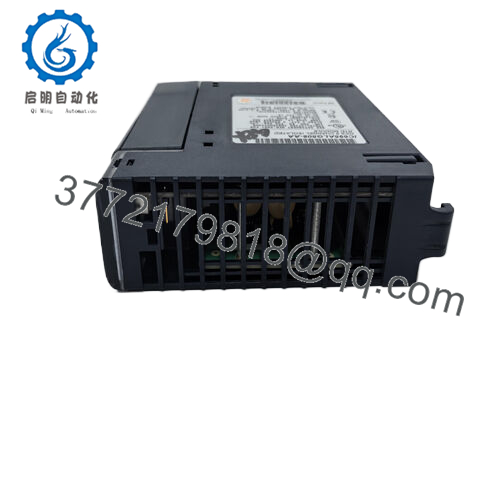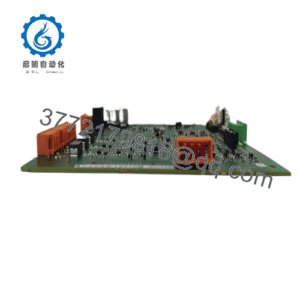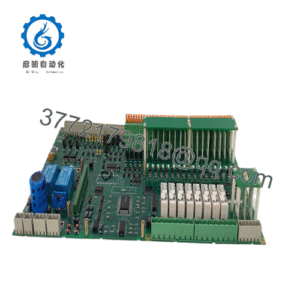Description
In industrial automation, bridging legacy field devices to modern control platforms frequently exposes a thorny integration gap: the need for seamless, deterministic communication without overhauling entrenched wiring or risking latency that unravels real-time process control. Imagine a legacy manufacturing cell in an automotive supplier’s plant, where PROFIBUS DP slaves—driving sensors for weld gun positions or robotic grippers—must sync with a high-speed PAC controller; mismatched protocols lead to polling delays, dropped packets, or desynchronized I/O signals that trigger false rejects, halting lines and inflating scrap rates amid just-in-time pressures. This is the interoperability impasse the GE IC695PBS301-AA elegantly dissolves. As a PROFIBUS Slave Module for PACSystems RX3i, it embeds slave functionality into a single-slot universal backplane design, enabling up to 244 bytes of input and 244 bytes of output data exchange at 12 Mbps over a 9-pin D-sub connector. Compliant with PROFIBUS DP-V0 and DP-V1, it delivers high-reliability I/O signal handling by mapping field data directly to the RX3i CPU’s memory, fostering modular integration that preserves existing bus topologies while unlocking the platform’s native diagnostics for proactive fault isolation.
Engineers opt for the GE IC695PBS301-AA in hybrid environments—like retrofitting a chemical plant’s valve manifolds or a water utility’s remote pump stations—where master-slave hierarchies demand plug-and-play extension without custom gateways that compound commissioning time. It stands out in process control setups prioritizing system stability, supporting acyclic messaging for parameter reads alongside cyclic data for continuous loops, ensuring sub-10 ms response times that keep feedback tight for PID adjustments or safety interlocks. In these industrial automation contexts, the module’s GSD file import via Proficy Machine Edition simplifies configuration, assigning %I/%Q references without ladder modifications, while its isolation barriers (1500 Vrms) shield against ground shifts common in long cable runs up to 1200 meters at 93 kbps. The GE IC695PBS301-AA also incorporates automatic baud rate detection and address switching, a boon for dynamic networks where slaves auto-join without manual tweaks, and its status LEDs flag sync losses or bus errors for immediate on-rack triage. For teams navigating brownfield migrations, it coexists with EGD or PROFINET siblings in the same rack, bridging PROFIBUS islands to Ethernet backbones sans middleware, and its low power draw (5 W) fits dense configurations without thermal upticks. When operational fluidity hinges on unified data flows—like synchronized batch dosing or conveyor phasing—this module doesn’t just interface; it assimilates, embedding the high-reliability conduit that evolves disparate signals into a cohesive, observable control layer, empowering the agility your processes require in an era of converging protocols.
PROFIBUS slaves don’t disconnect overtly—they stutter, eroding trust in field reads until a cycle overrun exposes the disconnect. The GE IC695PBS301-AA thwarts this with embedded token-ring arbitration, so your RX3i CPU receives consistent frames, not fragments, cultivating the rhythmic exchanges that sustain loops in volatile networks.
Installed in any I/O slot of the PACSystems RX3i universal backplane, the GE IC695PBS301-AA interfaces via a 9-pin D-sub to the PROFIBUS DP segment, serializing up to 244 input bytes (from remote I/O or sensors) and 244 output bytes (to actuators) into backplane-accessible %I/%Q maps for CPU polling. It draws +5 VDC from the rack while terminating the bus internally (switchable 100/220 ohms), rooting it mid-stack: field-bus proximal for minimal latency but controller-adjacent for aggregated scans, where it handles DP-V1 alarms and diagnostics via acyclic services without taxing the PCI backbone. This enables daisy-chaining up to 126 slaves, with the module acting as a transparent proxy that reflects master commands downstream and echoes responses upstream, all configurable through Proficy’s GSD import for device-specific mappings.
Diagnostics are intrinsic: seven front LEDs (power, bus active, sync, error types) plus %S status bits relay token timeouts or parity faults to HMIs like CIMPLICITY, supporting SNMP traps for remote oversight—no external monitors required. Redundancy layers in via ring topologies or dual-slave mirroring, where data holds last-good during cable faults to preserve loops under 5 ms. Protocol fidelity sticks to PROFIBUS DP (EN 50170), but it harmonizes with RX3i Ethernet modules for hybrid uplifts, funneling slave globals to EGD without conversion layers. In a deployed architecture, slot it near the NIU for edge placement: the CPU scans inputs every cycle (as low as 1 ms), validates outputs against field echoes, and the D-sub links shielded twisted-pair to legacy drops—all while auto-baud (9.6 kbps to 12 Mbps) adapts to network drift. Setup in Machine Edition is streamlined—load GSD, set node ID (0-125), verify termination pre-power—but test sync with a master simulator to catch address clashes. This synergy doesn’t isolate your stack; it interconnects it, channeling slave savvy from bus to brain with the determinism that defines integrated industrial automation.
| Specification | Details |
|---|---|
| Model Number | IC695PBS301-AA |
| Brand | GE (Emerson Automation) |
| Type | PROFIBUS DP Slave Module |
| Input Voltage | +5 VDC (from backplane) |
| Operating Temp Range | 0°C to 60°C |
| Mounting Style | RX3i Universal Backplane |
| Dimensions | 14.7 cm x 5.1 cm x 11.2 cm |
| Weight | 0.20 kg |
| Interface/Bus | 9-pin D-sub PROFIBUS DP |
| Compliance | CE, UL, RoHS |
| Supported Protocols | PROFIBUS DP-V0/V1 (EN 50170) |
| Typical Power Draw | 5 W |
Adopting the GE IC695PBS301-AA into your RX3i ecosystem yields slave communications that withstand bus noise or token collisions, engineered for the unceasing dialogue of process control where frames arrive intact across 12 Mbps spans, ensuring master polls elicit precise echoes that stabilize valve positions or sensor arrays—often trimming integration hours by 40% in legacy blends by auto-configuring via GSD without custom rungs. This performance consistency lets your sequences adapt to slave additions mid-run, refining throughput in distributed cells where cyclic data directly correlates to cycle-time parity and defect culls. Maintenance refines to revelations: error LEDs and status interrupts pinpoint parity glitches to cable segments via quick D-sub reseats, guiding techs to termination tweaks over exhaustive token hunts, which elevates uptime for refinements over rectifications.
- IC695PBS301-AA
- IC695PBS301-AA
- IC695PBS301-AA
The module’s single-slot footprint eases rack hybridization, folding PROFIBUS into PCI flows without expansion cards—a relief for engineering lift in audits where one module bridges 244 bytes, not a gateway thicket. In cable-congested trays, its isolation and auto-baud fortify against induced errors, securing high-reliability I/O signals that populate trends for drift detection, like impedance creep from connector age. Over deployments, this curtails the covert costs of protocol silos, like prolonged sync chases, fostering the availability that weaves OEE threads and compliance weaves.
For horizon-bound builds, the GE IC695PBS301-AA nurtures that bridgeable breadth—its %I/%Q hooks prime for OPC gateways to analytics realms, recasting slave streams into foresight streams without rebuilds. This isn’t peripheral plugging; it’s the assimilative artery that matures your matrix, dispensing the interoperability and insight that propel adaptive process control.
The GE IC695PBS301-AA deploys assuredly in discrete assembly zones, slaving weld timers to RX3i masters where its DP-V1 alarms sustain continuous uptime amid arc EMI and process control calls for millisecond fault flags. Utility SCADA nodes embed it for meter reads, echoing 244-byte payloads over 1000m runs to uphold critical system uptime in grounded, surge-vexed vaults.
Pharma packaging harnesses it for label applicator syncs, its acyclic reads fetching config sans cyclic drag for flawless serialization in ESD-wary lines—essential for traceability sans reprint rushes. These embeddings affirm its affinity in protocol-plural plains, from bottling fillers to rail switch yards, where the GE IC695PBS301-AA crafts the slave synergy for seamless industrial automation.
IC695PBM300 – PROFIBUS Master counterpart for RX3i-native bus orchestration in hybrid networks.
IC695PNC001 – PROFINET Controller companion to uplift slave data to Ethernet realms.
IC695LRE001 – Serial Bus Transmitter for extending PROFIBUS drops via legacy serial ties.
IC695NIU001 – Ethernet NIU add-on for remote slave integration in distributed racks.
IC694BEM331 – Genius Bus alternative for non-PROFIBUS slave migrations.
IC695ETM001 – Ethernet Transmitter to blend slave globals with EGD exchanges.
IC695ACC310 – Legacy adapter for Series 90-30 PROFIBUS slave crossovers.
Before docking the GE IC695PBS301-AA in your RX3i backplane, align firmware—Proficy version 8.0+ for full DP-V1; priors limit acyclics to 128 bytes, so update via Ethernet to avert service gaps. Claim a slot with D-sub routing leeway, as the 5 W draw prefers mid-rack away from PSUs—affix 3cm cable bends in enclosures to honor 0-60°C sans throttle. Bus prep: deploy twisted-pair (0.22-0.34 mm²) under 1200m at low baud, terminate ends at 150Ω, and ID-set via rotary (1-125) pre-juice to dodge clashes; test continuity with a bus analyzer for reflections. In Machine Edition, ingest GSD early, map %I/%Q, and simulate master polls to lock sync under 10 ms.
In the flow, care coalesces to clues that couple with circuits. Bi-weekly, peruse the error LEDs—flashing sync tags a token drift, mended by baud rescan. Quarterly, probe D-sub pins for oxidation in humid halls, exporting %S logs to chase frame tallies. In noise-nestled nets, monthly impedance sweeps at 93 kbps affirm <5% loss. Annual slave mocks a dropout to time recovery under 5 ms, filing for norms. These aren’t addles; they’re the attuned tempo that keeps slaves steadfast, shirking the sporadic but scan-sabotaging bus blackouts.

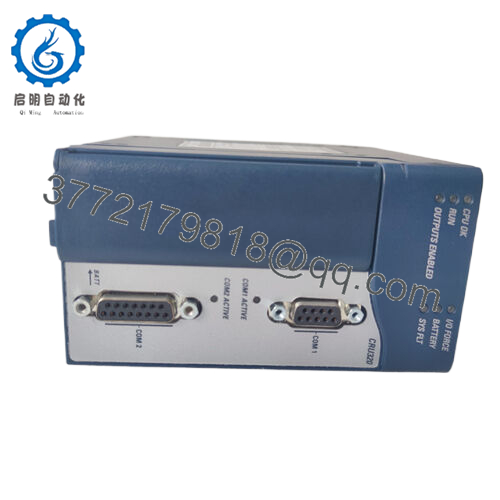
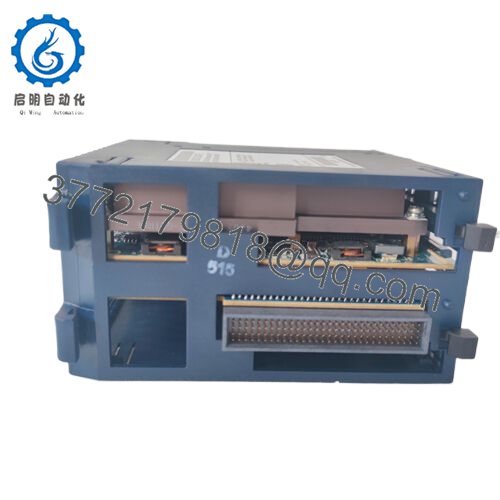

 WhatsApp: +86 16626708626
WhatsApp: +86 16626708626 Email:
Email:  Phone: +86 16626708626
Phone: +86 16626708626
